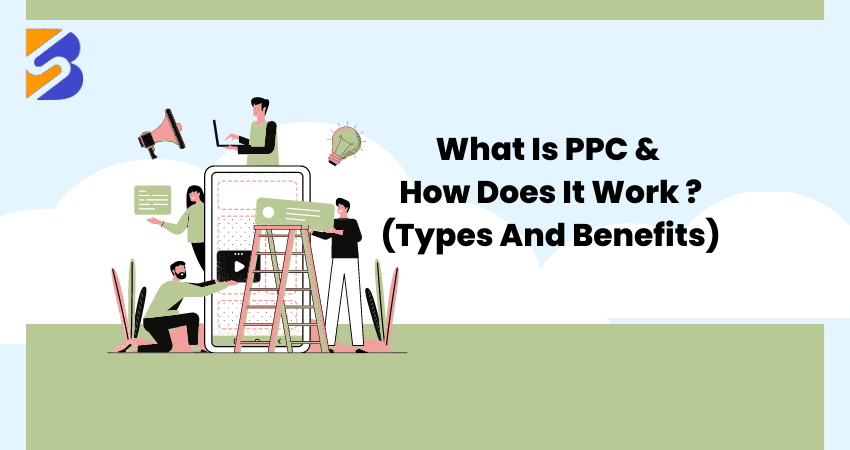Pay-Per-Click (PPC) Marketing is a powerful digital marketing strategy that allows businesses to drive targeted traffic to their websites and increase online visibility. Understanding what PPC is and how it works is essential for businesses looking to maximize their advertising efforts. In this blog post, we will explore the fundamentals of PPC, including its definition, working mechanism, different types, and the significant benefits it offers. Whether you’re new to PPC or seeking to enhance your existing knowledge, this guide will provide valuable insights to help you leverage PPC effectively for your business.
What is PPC?
PPC stands for pay-per-click, a type of online advertising where advertisers pay each time a user clicks on their ad. PPC ads are displayed at the top of search engine results pages (SERPs) when a user enters a relevant keyword or phrase into the search bar. It is a method of driving traffic to websites, rather than attempting to earn organic clicks. PPC campaigns allow businesses to display their ads on search engines, social media platforms, and other websites, where they only pay when someone clicks on their ad.
How Does PPC work?
- Keyword Research: The first step in a successful PPC campaign is thorough keyword research. Advertisers identify relevant keywords or phrases that their target audience is likely to use when searching for products or services.
- Ad Creation: Once the keywords are identified, advertisers create engaging and persuasive ads that are designed to capture the attention of potential customers. These ads typically include a headline, description, and a call-to-action (CTA) that encourages users to click on the ad.
- Campaign Setup: Advertisers use PPC platforms like Google Ads or Bing Ads to set up their campaigns. They define parameters such as target audience, geographic location, budget, and bidding strategy. Bidding determines how much an advertiser is willing to pay for each click on their ad.
- Ad Placement: Advertisers choose where they want their ads to be displayed. They can target specific search engine results pages (SERPs), social media platforms, websites, or a combination of these channels.
- Ad Auction: When a user enters a search query or visits a website that matches the advertiser’s targeting criteria, an ad auction takes place. The auction determines which ads will be displayed and in what order, based on factors such as bid amount, ad relevance, and overall quality score.
- Ad Display and Clicks: If an advertiser’s ad wins the auction, it is displayed to the user. If the user finds the ad relevant and compelling, they may click on it, which takes them to the advertiser’s website or landing page. The advertiser is charged for each click on their ad.
- Monitoring and Optimization: Throughout the campaign, advertisers continuously monitor their ads’ performance and make adjustments to improve results. They analyze metrics like click-through rates (CTR), conversion rates, and return on investment (ROI). Optimization techniques may include refining keywords, adjusting bidding strategies, or refining ad content.
Different Types of PPC Advertising
However, PPC is not a one-size-fits-all approach. There are various types of PPC advertising, each with its unique features and benefits. we will explore different types of PPC advertising to help you understand their characteristics and how they can complement your overall marketing strategy.
Search Advertising
Search advertising is the most common type of PPC advertising and is primarily associated with search engines like Google, Bing, and Yahoo. With search advertising, businesses bid on specific keywords relevant to their products or services. When users search for those keywords, ads related to the search query appear at the top or bottom of the search engine results page (SERP). These ads typically consist of a headline, a description, and a clickable link.
Display Advertising
Display advertising involves placing visual ads on various websites within a network of publishers. These ads can appear in the form of banners, images, or videos. Advertisers can target specific websites or use audience targeting to display ads to users based on their demographics, interests, or browsing behavior. Display advertising helps build brand awareness and reach a broader audience.
Social Media Advertising
Social media marketing platforms like Facebook, Instagram, Twitter, LinkedIn, and Pinterest offer robust PPC advertising options. Advertisers can create highly targeted campaigns based on users’ demographics, interests, behaviors, and connections. Social media ads can take the form of sponsored posts, images, videos, carousels, or interactive ads, seamlessly blending into users’ social feeds.
Remarketing
Remarketing, also known as retargeting, is a technique that targets users who have previously interacted with your website but did not convert. It involves displaying ads to these users as they browse other websites or social media platforms. Remarketing keeps your brand top-of-mind and encourages users to return and complete their desired action.
Video advertising
Video advertising is a type of display advertising that uses video. Video ads can be used to tell a story, demonstrate a product or service, or simply entertain viewers.
Email marketing
Email marketing is a type of PPC advertising that uses email. Email marketing allows you to reach people who have already expressed interest in your products or services.
Benefits of Using PPC Advertising?
- Immediate Results: Unlike organic search engine optimization (SEO) strategies that take time to show results, PPC campaigns can generate immediate traffic and visibility for businesses. This makes PPC a valuable tool for promoting new products, seasonal offers, or time-sensitive campaigns.
- Targeted Reach: PPC allows businesses to target specific keywords, demographics, geographic locations, and even interests of their target audience. This level of targeting ensures that ads are shown to users who are most likely to be interested in the products or services offered.
- Cost Control: PPC platforms offer budget control features, allowing advertisers to set daily or monthly spending limits. This gives businesses control over their advertising expenses and ensures they only pay when users click on their ads.
- Measurable Results: PPC campaigns provide detailed data and analytics, allowing advertisers to measure the effectiveness of their ads and make data-driven decisions. Metrics such as impressions, clicks, conversions, and ROI provide valuable insights into campaign performance.
- Flexibility for Campaign Customization: PPC advertising offers unparalleled flexibility and customization options for your campaigns. You can create multiple ad variations, test different headlines, descriptions, and calls-to-action to determine which combinations yield the best results. This iterative process allows you to refine and optimize your campaigns for maximum impact.
Conclusion
In conclusion, PPC advertising is a powerful tool that can help you reach more potential customers and grow your business. If you’re not already using PPC advertising, I encourage you to give it a try.
If you’re looking for a way to reach more potential customers and grow your business, PPC advertising is a great option.
By implementing strategic PPC campaigns and continuously optimizing them based on data and insights, you can enhance your online visibility, increase brand awareness, drive targeted traffic, and ultimately achieve your business goals. Embrace the power of PPC and unlock its potential to take your business to new heights in the competitive digital landscape.



